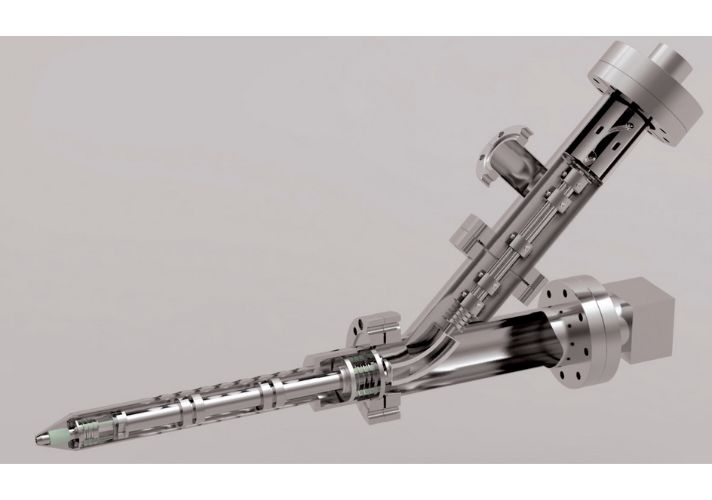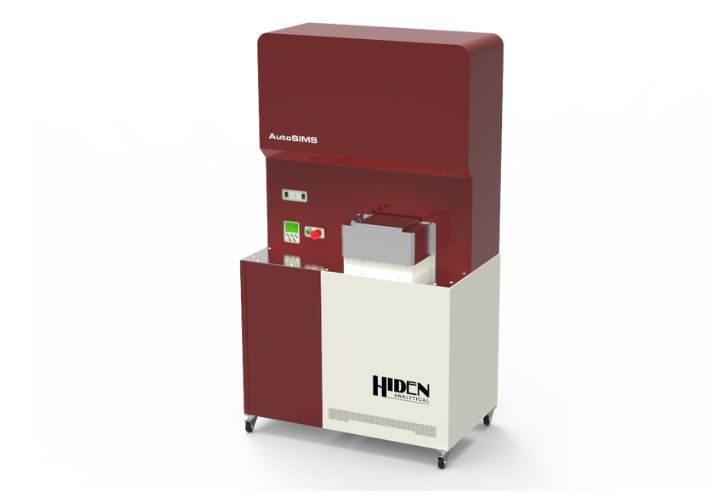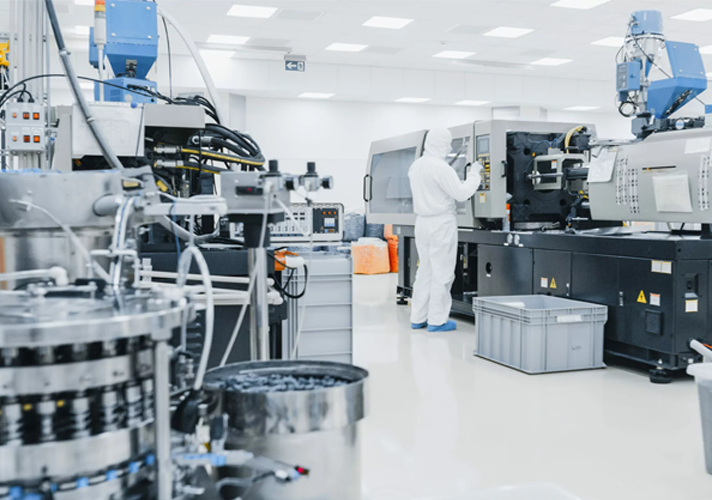Hiden Analytical’s surface analysis systems are a comprehensive solution for in-depth profiling and composition analysis of samples in a wide range of fields: surface analysis, thin film technology, semiconductor industry, fuel cell research, etc. In addition, the system can provide options according to specific research needs or process monitoring requirements, ensuring maximum performance tailored to the user’s application (custom SIMS solutions).
Product

ToF-qSIMS Workstation
- Model: ToF-qSIMS
- Manufacturer: Hiden Analytical
- Contamination with silicone: top monolayer specific analysis
- Surgical stent: imaging, depth profiling and surface specific analysis to characterise the near surface
- Contamination: imaging and mass spectra to locate and identify surface contamination
- Nuclear materials: identification of isotopically rich materials using bulk composition mass spectra
- Pharmaceuticals: identification of molecular signals using static SIMS on powders

EQS SIMS Analyser
- Model: EQS SIMS
- Manufacturer: Hiden Analytical
- FIB-SIMS for Nano-Scale Materials Analysis
- Battery Research
- Nuclear Materials
- UHV Surface Science

SIMS Workstation
- Model: SIMS WORSTATION
- Manufacturer: Hiden Analytical
SIMS Workstation is an extremely versatile and highly – sensitive instrument that uses secondary ion mass spectrometry (SIMS) in both dynamic and static SIMS. With an extended range and the ability to acquire and identify both positive (+ve) and negative (-ve) secondary ions, the SIMS workstation is a comprehensive solution for composition analysis and depth profiling applications of materials including polymers, superconductors, semiconductors, alloys, optical and functional coatings, and dielectrics.
Advantage:
- Can detect all elements and their isotopes
- High sensitivity, wide detection limit (detectable up to ppb)
- Automatic mass alignment for optimal SIMS performance
- SIMS Surface Analysis and SNMS Surface Analysis
- Nuclear Materials
- UHV Surface Science
- Flexible Solar Cell
- Electronic Materials

Compact SIMS
- Contamination with Silicone
- Thin Films Optical Coating
- Electronic Materials
- Flexible Solar Cell

AutoSIMS
- Model: AutoSIMS
- Manufacturer: Hiden Analytical
- For automatic unattended analysis of multiple samples
- Small footprint
- Easy “user-friendly” layout
- Depth Profiling
- Requires only single-phase electrical power (under 10 A)
- Positive SIMS and SNMS
- Mobile cart design
- 3D characterization and imaging
- Mass spectra
- Isotopic analysis
- Parameters can be specified via spreadsheet
- Nanometre depth resolution
- Modular servicing for high up time
- Oxygen ion gun for sensitive analysis
- Customizable casstte style sample holder
- Contamination with Silicone
- Flexible Solar Cell
- Surgical Stent
- Electronic Materials

MAXIM
- Model: MAXIM
- Manufacturer: Hiden Analytical
- Surgical Stent
- Flexible Solar Cell

IG5C
- Model: IG5C
- Manufacturer: Hiden Analytical
- 20 Micron Minimum Spot Size
- High Current Density
- Neutral Dump
- Replaceable air stable surface ionisation source
- DN-35-CF Conflat Flange Mounting
- Thin Films Optical Coating
- Electronic Materials

IG20
- Model: IG20
- Manufacturer: Hiden Analytical
Features:
- 100Micron Spot Size
- HighCurrent Density
- OxygenCompatible
- NeutralDump
- Scanning
- EasilyReplaceable Twin Filaments
- DN35 Conflat Flange Mounting
- Thin Films Optical Coating
- Electronic Materials
- Nuclear Materials
Overview
The characteristics and features of a solid surface depend on the chemical structure of the material’s surface. By using surface analysis equipment, it is possible to analyze the elemental composition and state of the solid surface.
The outermost part of the material is extremely sensitive, carrying surface properties such as the material’s chemical activity, adhesion, wettability, electrical properties, optical properties, corrosion resistance, friction and biocompatibility, and it is also the part that is most easily loses those properties due to environmental degradation and pollution, process residue adhesion, etc.
Therefore, surface analysis is not only used to develop new functional surfaces and products that use them, but also helps high-performance materials to perform their functions properly. For example, in the semiconductor manufacturing process, even a minimal amount of impurities or foreign matter adhesion on the surface can cause the product to fail to meet quality standards. In addition, when detecting contamination, the composition of the contaminant must be analyzed first to clarify the cause.
Hiden Analytical’s surface analysis systems are a comprehensive solution for in-depth profiling and composition analysis of samples in a wide range of fields: surface analysis, thin film technology, semiconductor industry, fuel cell research, etc. In addition, the system can provide options according to specific research needs or process monitoring requirements, ensuring maximum performance tailored to the user’s application (custom SIMS solutions).
Application
-
- Surface Analysis using SIMS and SNMS Techniques:Reecotech distributed SIMS secondary ion mass spectrometry provides high-performance static and dynamic SIMS analysis for surface composition analysis, contaminant analysis, and high-resolution depth profiling of sample surface layers.
- Material Surface Analysis at the Nanoscale: Nano-scale materials analysis focuses on detecting trace and ultra-trace elements down to the ppm range. The Reecotech distributed focused ion beam secondary ion mass spectrometry (FIB-SIMS) system offers isotope and ion (atomic, molecular) detection, 3D elemental mapping, and lays the foundation for qualitative analysis of nanolayer composition.
- Analysis of Silicone Contamination on Material Surfaces: Polydimethylsiloxane (PDMS) is used as a lubricant in cosmetics, food additive [E900] and a sealant very popular in the industry. However, PDMS can decompose into silicon dioxide (glass), forming an insulating layer in electronic devices and making it difficult to bond surfaces, it is also very difficult to remove. Hiden Analytical’s SIMS equipment can easily detect the presence of this important industrial contaminant.
- Semiconductor – Electronics Materials Research: SIMS is critical for dopant analysis in semiconductor materials, applications in direct measurement of ion implantation dose and diffusion; measuring layer thickness, layer sharpness and alloy composition; and monitoring metallization, passivation and contamination processes.
- Flexible solar cell: Hiden Analytical Secondary ion mass spectrometry SIMS analyzers multicomponent complex depth profiles collecting both matrix and dopant level elements in surface of Flexible solar cell
- Isotopic Composition Determination in Materials: Hiden Analytical’s SIMS secondary ion mass spectrometer can identify the isotopic composition of materials, helping to analyze the diffusion of isotopes in layers.
- Nuclear Materials Research: The ability to measure isotopes and analyze small particles allows SIMS secondary ion mass spectrometry to analyze research on nuclear materials.
- Stent Surface Research: A stent is a small metal mesh coil that is placed in a blocked coronary artery and needs to be biocompatible with the body, so stent surface inspection is very important. Hiden Analytical’s mass spectrometers are used to analyze surface composition with nanometer accuracy. In addition, stents can be coated with a polymer layer for protection or for drug elution, SIMS can be used to study and characterize this polymer layer.
- Depth Profiling and Quantitative Composition of Alloys by Sputtered Neutral Mass Spectrometry (SNMS): Hiden Analytical’s sputtered neutral mass spectrometer provides high-resolution quantitative depth data for analyzing the layer structure of materials and the active region of the material surface.
- Applications in the Pharmaceutical Field: Hiden Analytical’s SIMS instrument can analyze drug powders by dispersing them on conductive adhesive tape, forming pellets, or pressing them into indium plates. In addition, this instrument can detect the presence of binders, fillers or excipients in drugs using low energy ion beams.vvv





